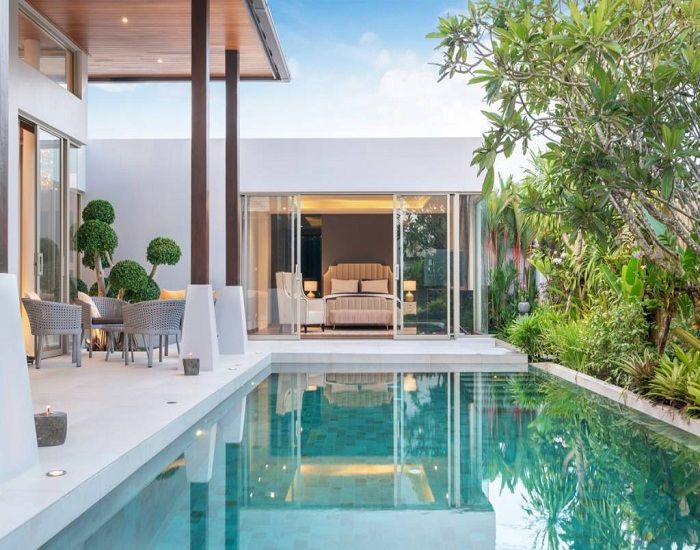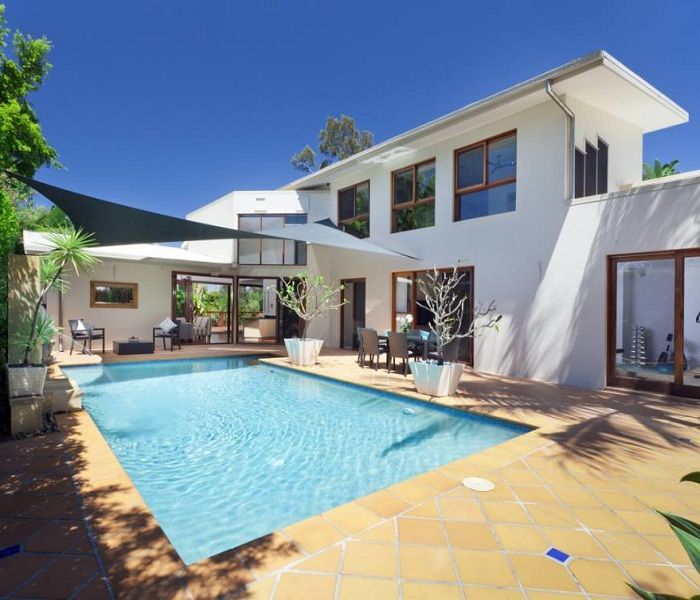Swimming pool: which indicators to monitor ?
To take full advantage of your swimming pool, regular and rigorous maintenance is essential. Among the steps to achieve this is maintaining the quality of the’water. It matters to’analyze the latter in order to know certain information such as pH, hardness, disinfectant content, etc.
You must thus have control over all these indicators in order to adjust them according to the standards.
The connected pool to monitor the indicators of the’water

To monitor the indicators of the’Water D’a swimming pool, the connected swimming pool constitutes today’hui an excellent solution. It allows you to dispense with these repetitive and restrictive tasks in order to Maintain a swimming pool respecting standards. Thanks to a dedicated application, it is indeed possible to adjust and control everything remotely from the dashboard and thanks to the voice command functions. From filtration to measurements, including leak detection, the temperature of the’water, lights, l’electrolyser, etc. To find out more about the connected swimming pool, go to the official website.
The connected version will greatly improve your daily life.
The indicators of the’water to monitor in a swimming pool
To be functional, a swimming pool must maintain a certain chemical balance. This allows the’water to remain pure, non-irritating and of high quality, but also prevents the material from deteriorating. Here are the main indicators to observe to do this:
Taylor’s balance
Taylor’s balance refers to the perfect balance between pH, hardness and l’alkalinity of’pool water.
- The pH is used to determine whether the’pool water is acidic or basic. In general, the’ideal is d’obtain a pH of 7.4, which is equivalent to neutral or slightly basic water. However, this indicator also depends on the treatment of the’water, especially chlorine which directly affects the pH,
- The hardness of the’swimming pool water allows you to know if it is hard or soft. Its unit of measurement is the hydrometric title or Th and s’expressed in French degrees °F. This indicator ideally measures between 10 and 20°F. Below, the’water may cause corrosion of the equipment. In addition, water that is too soft irritates the eyes and the skin. Above 20°F, the’water is too calcareous, which causes unpleasant deposits on the walls.
I’alkalinity of’water or TAC indicates the’ion balance of the’water. They’expresses in full alkalimetric title and is ideally between 80 and 120 mg/L, which is equivalent to 8 and 12 °F. I’alkalinity decreases with nitrification and precipitation of calcium carbonate.
It increases with the dissolution of calcium carbonate.
Other indicators to watch
D’other levels are also to be monitored for a swimming pool, in particular the rate of disinfectant in the’water. As limestone or micro-organisms can deposit on the walls of’a swimming pool and’water, it is essential to carry out a regular disinfection. To do this, bromine or chlorine is a good disinfectant.
But you don’t have to’there are too many at the risk of making the’toxic water.
The chloramine level is also to be monitored. Chloramines or chlorinated amines in a swimming pool come from the reaction between chlorine and organic matter such as dead skin, saliva, sweat, l’urine, etc. Therefore, it is essential to’monitor the rate in order to eradicate them. They are corrosive for the pool and for bathers. Finally, the turbidity of the’water must also be monitored.
Water is said to be turpid when’she is confused. However, a clean swimming pool must be transparent and limpid. I’Pool water may be turpid due to limestone or greasy residue, dust, algae, etc.
This happens when the filtration device is not working properly or the’chemical balance of’water n’is not respected.
The different ways to measure the quality of’water’swimming pool
A monitoring of the various indicators must be done at least every week. In summer, when the pool is in high demand, the levels should be observed two to three times a week. To do this, there are several dedicated instruments.
test strips

Test strips are the most popular choice for pool owners to assess pool quality’water. I’instrument is simple to use: just immerse it in the’water for a few minutes and d’wait for the result. The different reagents color the strip. A color chart is necessary to check the value of the color obtained.
Several parameters can be measured by the test strips: pH, hardness, TAC, bromine level, chlorine level, etc. It should be noted that each indicator requires its strip. This instrument n’obviously provides no precision, but the colorimetry is still usable.
The test pellets
Tablets work on the same principle as test strips. They contain a reagent which will color according to the’indicator to measure. To do this, you have to take’swimming pool water in a container. Then just’put the tablet in it and d’wait for the result.
It should be noted that the strips and lozenges expire. They must therefore be renewed each season.
Measurement probes
Measuring probes are used to test pH and chlorine in water’water’swimming pool. They’is about’electronic devices to dive into the pool filled with’water or in a sample of’pool water. pH and chlorine probes provide accurate results if calibrated properly. D’elsewhere, it is recommended to carry out their calibration twice a year.
In addition to pH and chlorine probes, there are also models that are used to measure bromine, chlorine,’alkalinity, salinity, etc.
Photometer or electronic pooltester
The electronic photometer or pooltester differs from probes in their operating principle. Like pellets,’electronic device works with a reactive to change on a regular basis. There are refills on the trade.
In general, the photometer is used to measure the TAC.
